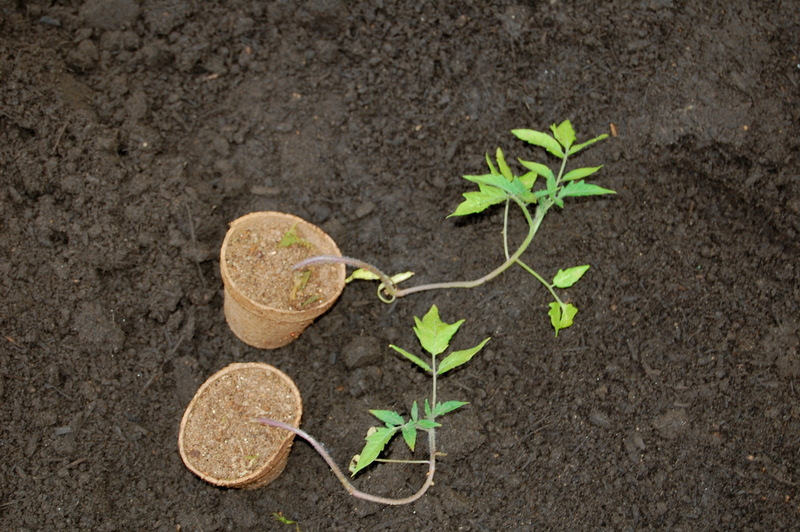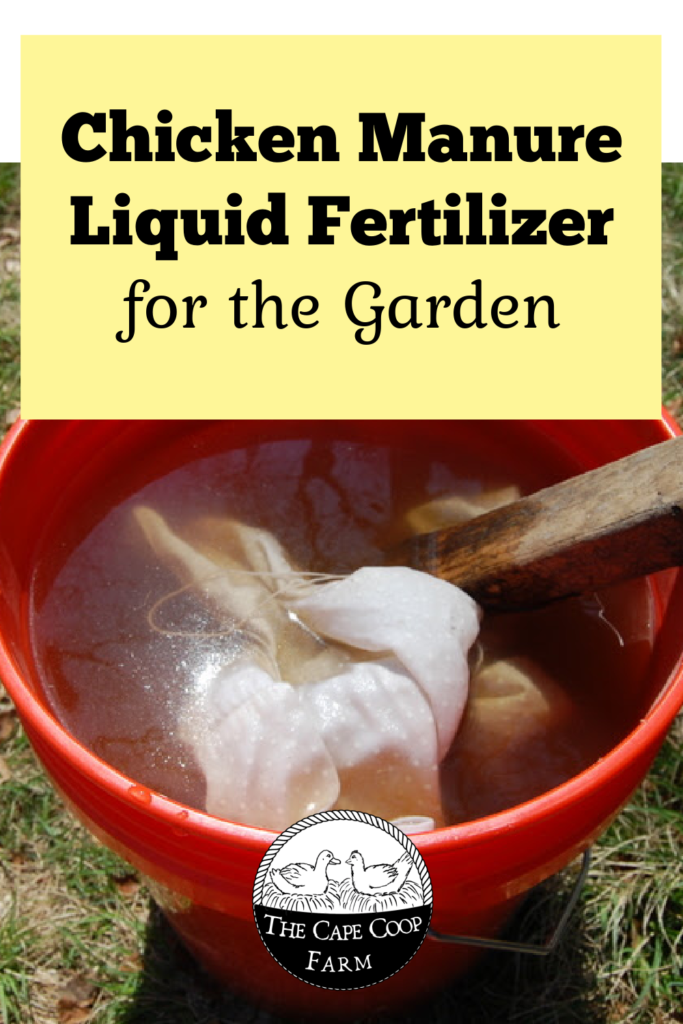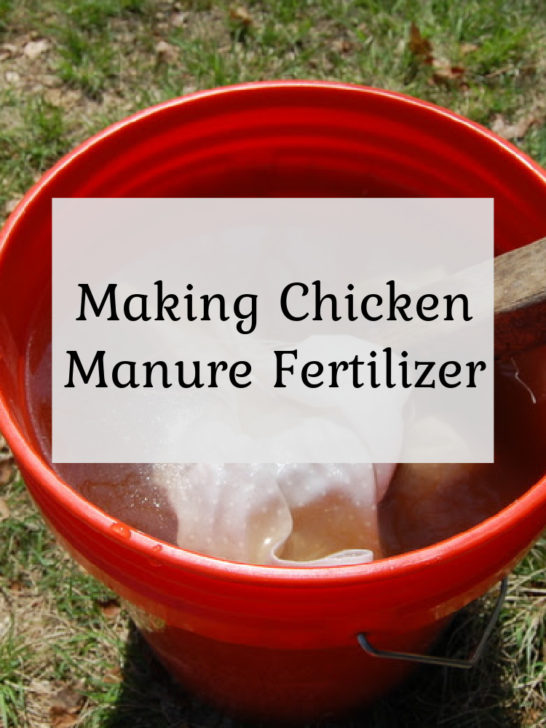---------------------------------------------------------
How does a nice cup of Chicken Manure Tea sound? Not for you? Well it is just what your plants are craving! Chicken manure is the super food of the plant world. It has some of the highest Nitrogen-Phosphorous-Potassium ratios of any animal manure. It is loaded with beneficial microorganisms, bacteria, and organic matter your plants need to grow strong and healthy.
By the time your seedlings have sprouted their second set of permanent leaves, they have used up all of their initial stores of nutrients, and they will be looking for a boost. You can buy liquid starter fertilizer, but do you really want to introduce chemicals in your garden? Plus, they can’t compare to God’s natural fertilizer. Heavy nitrogen feeders such as tomatoes, asparagus, and watermelons will especially love it!
Because chicken manure has a very high nitrogen content, it should be “aged” for 6-12 months before being using on plants or to make tea. If you were to use fresh manure, it could burn your plants or the roots. Additionally, aging the manure will allow most or all of the pathogens in the manure to be eliminated.
It is super easy to make, and free if you have chickens and a bucket. I won’t lie to you, it does smell more “earthy” than Miracle Grow, so it is best to brew and store this outside.
How to make Chicken Manure Tea Fertilizer
The main goal of making manure tea is to leech the good stuff out of the manure without having the particles floating around in it.
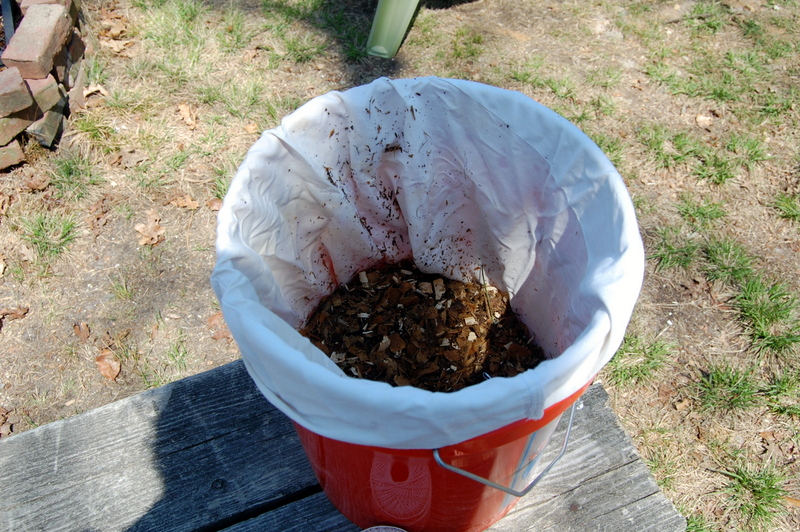
Scoop some aged chicken manure & shavings into a cloth bag. It’s not necessary to separate out all of the manure from the shavings. The shavings will have absorbed some of the nutrients, and if they are pine shavings will have some nutrients of their own to add. You can use a burlap sack, old tee shirt, a piece of muslin, or a old pillow case. You should add enough aged manure & shavings to the sack so it will take up roughly 1/3 of your bucket. Add a brick or rock to the bag so it will stay submerged and tie the bag up with twine.
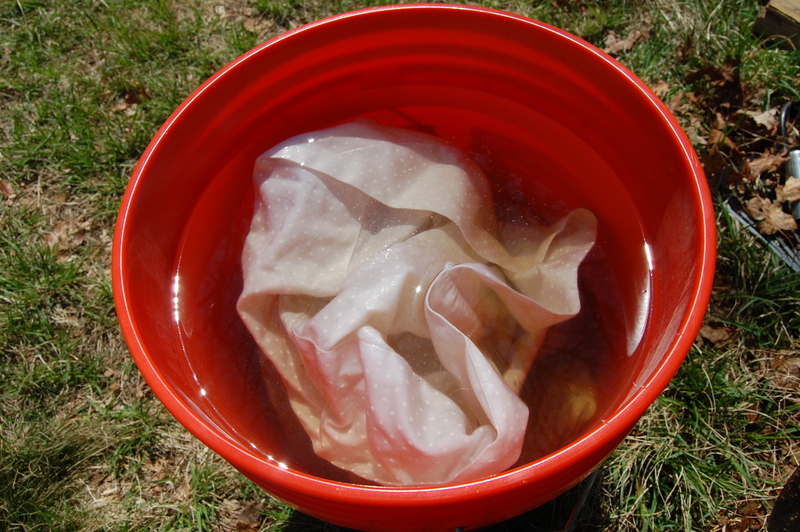
Add your bag to the bucket and fill the bucket with water. Loosely cover the bucket to keep the smell down. Put the bucket in a sunny location outside to steep. Wash your hands well!
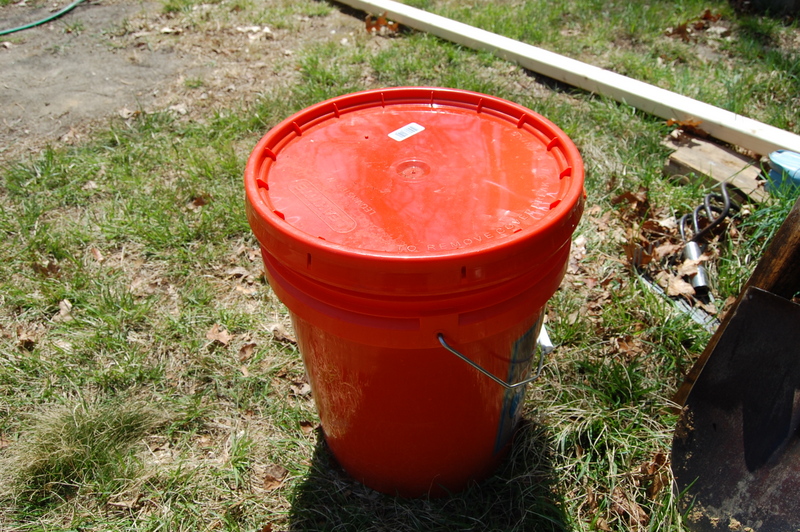
A couple of times each day, briskly stir the tea with a stick to introduce oxygen. Manure that is not oxygenated can grow pathogens. Wash your hands well!
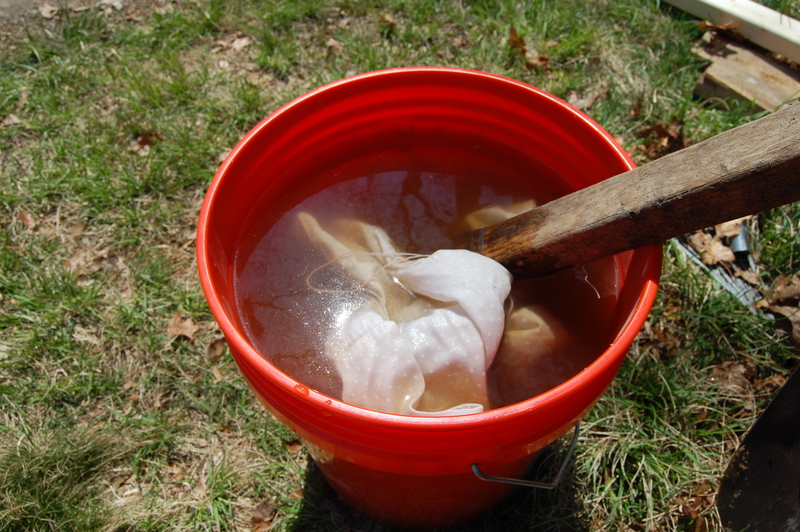
After about one week, your tea should be ready. Remove the bag and add the contents to your compost pile. The manure tea should be the color of a weak cup of herbal tea. Wash your hands well!
Using Chicken Manure Tea Fertilizer
When you pull the bag of manure out of the bucket the tea should fill about half the bucket (if not, dump a little out). Then fill the bucket to the top with fresh water to dilute the tea to 1 part water, 1 part tea.
Give the tea to your seedlings every other week at the base of the plant and watch them take off! You can also continue to fertilizer your plants once you move them to the garden with the tea, every other week until they begin to flower. Once they begin to flower, you want to limit the nitrogen to encourage the plants to focus less on growing big, healthy foliage and more on producing fruit or veggies.
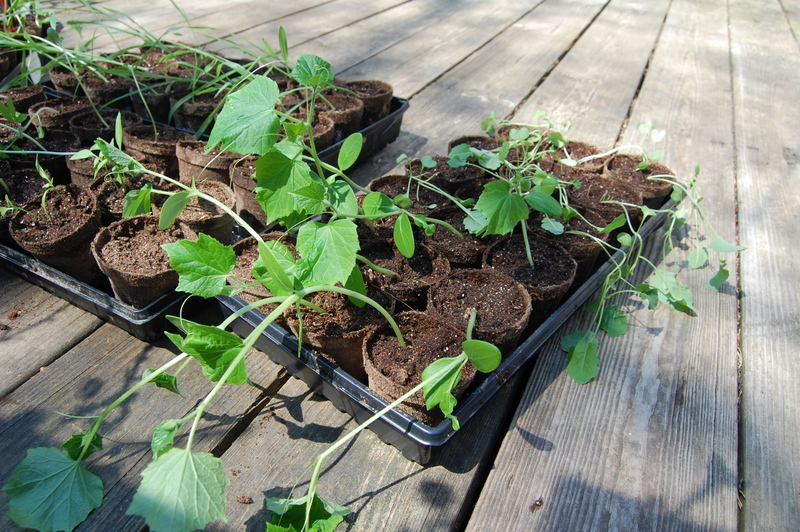
Precautions when using Chicken Manure Tea Fertilizer
Remember you are using chicken poop on future food you and your family will be eating. Yes it sounds gross, but it’s not as gross as dumping all the chemicals in commercial fertilizer on them. The risk of pathogens is small, but it is better to be safe than sorry. To this end, you should not use manure tea on root vegetables (potatoes, carrots, etc) or on greens that you will be eating (lettuce, kale, etc).
Try to avoid splashing the leaves when watering and be sure to wash your hands thoroughly every time you handle it. Keep the bucket away from children, and store it outdoors, loosely covered. Continue to stir it a few times a week even after you have removed the bag of manure to add oxygen.
The picture below shows just what a difference fertilizer can make. These two tomato plants were started on the same day, from the same seed packet, grown side by side in the same location. This picture was taken on the day we were transplanting into the garden. The plant on the top had JUST ONE application of manure tea, two weeks before the picture was taken. You can see not only is it taller, it has more leaves and branches – and that is from just ONE application of manure tea!
